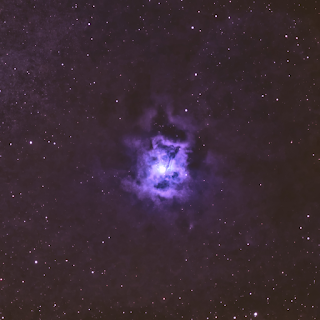Better Late than Never
My New Mount
After
11 years of using a Losmandy G11 EQ mount it was time for a
change. The
Losmandy is a very stable and reliable mount for
astrophotography and many
imagers use them. For me, it just became my weakest part of my
system
especially after upgrading my imaging camera to the 20MP ZWO
ASI183mm Pro. The
Losmandy had intermittent times of great guiding at .30 arc
sec., but other
times it could be over 1.5 arc sec. I did all I could to tweak
the mount with
better worm gears and bearings but I just wanted something I
didn't need to
fiddle with.
So
in the summer of 2021, I decided to do more research and track
down a new mount
within my limited budget. I wanted a mount with payload
capabilities similar
to my G-11 even though I'm using a 20lb imaging train. I am
always wanting
a larger scope. The summer of 2021 wasn't the best time to
look for
something new, with covid 19 still affecting supply chains for
anything
astronomy related. If I found a mount I was interested in,
could I
actually get my hands on it? My dream mount was the Italian
made
10micron GM1000HPS,
but at $13.000+ that was out of
the question.
I
started researching the Sky
Watcher EQ-8. At around $5000.00 it looked promising. The
reviews seemed
good with the exception of USB port flaws, but I figured I
could work around
them. Now I had to find one. I scoured the internet with no
luck. Talking
to a few Canadian dealers, they told me that they didn't
expect any new stock until
summer 2022. The 3rd mount on my list was the iOptron CEM
70. It had
favorable reviews and was in my price range. The CEM 70 had
a lot of great
features I wanted. One thing I didn't need was a tripod,
with the
mount sitting in an observatory on a permanent pier. So back
to
searching online. Behold, I found one, the CEM 70G, with no
tripod. It was in stock and ready for immediate shipping.
The G version of
this mount has its own built-in polar alignment scope and
guide scope with
camera. One day later I received my packages from Ontario
Telescope: The mount, with its own carrying case, the
counter weight, and
the pier extension kit, as recommended by the owner Steve.
Installing
the mount on the
existing pier was quite simple with a part from the pier
extension kit. I
had to drill a few holes and it was good to go. All I had to
do now was to
polar align the mount. The CEM 70G has a built-in polar
alignment scope
and camera, but it needed to be calibrated before use
according to the
manual. Since I already had a QHY Pole master alignment
camera, I decided
to go with it since it didn't need calibrating and I was
familiar with its use
and accuracy. The CEM 70G has a payload of 70lbs, so my 20lb
imaging system is
nothing for it. The feature I like most about this mount is
its internal
cabling system and built-in USB-3 hub. No more dangling
wires. I plug
in 1 USB and 12v power cable to the base of the mount and
there are connectors
at the base of the telescope. Nice and neat and no wire
snags.
After
the mount was polar aligned
it was ready to go. I did a 2 star alignment then slewed to
my first
object, M57. It was dead centre, perfect. To this date I
haven't needed to
do another star alignment. The auto guiding on this mount
has been exceptional
for me, .25 - .65 arc sec. I've seen a great improvement in
my images, with
smaller and rounder stars. For the first month of using this
mount, I used the hand controller. With the built in GPS
system, it automatically calculated
the proper time and location. All the functions of the mount
were at my
fingertips. But, after about 2 months, the hand controller
lost its
brains. Its internal battery had failed. The tech department
at iOptron
responded to my email within a few hours with a PDF on how
to replace it. After
doing so, the hand controller worked well again.
Recently I
decided to change how I operate the mount. Everything is now computer controlled and operated from my
PC in the
observatory or from the house. This opens up many
possibilities, like automatically
running a full night of imaging while I'm sleeping. I
haven't tried this yet because
I still like being out in the Observatory keeping an eye on
things.
Overall
I highly recommend this mount. I've been using the CEM70G in
my observatory for
16 months. It does what its supposed to do very
well. Hopefully one day,
I'll be able to test it with a much heavier telescope.
P.S.
Even though I have many opinions on the
equipment I own, this is my first actual written review. I
hope to have
more in the future. (All of these opinions and comments are
my own)
Glen
Pidsadnick
 |
| The Losmandy G-11 Setup I have used for years |
|
 |
| Ready to move on to a new home |
|
 |
The Pier Ready for the new mount with the adapter plate installed
|
The new mount on top of It's new perch
Back of the CEM70G with all It's handy connections

The new mount loaded up and ready to go






















